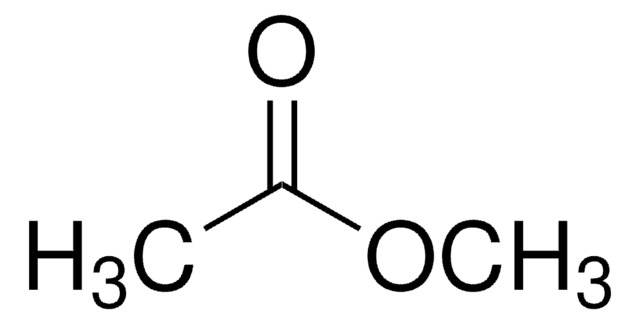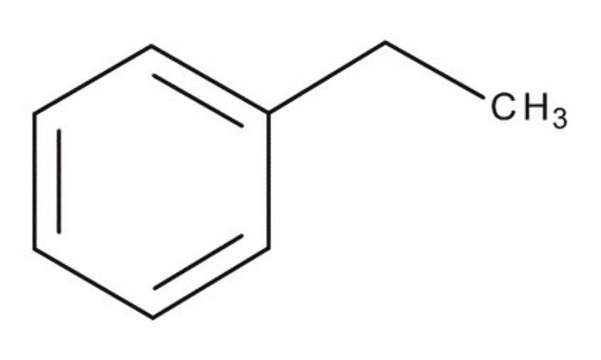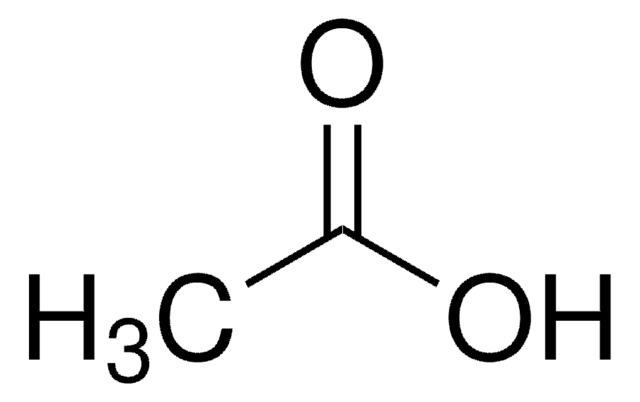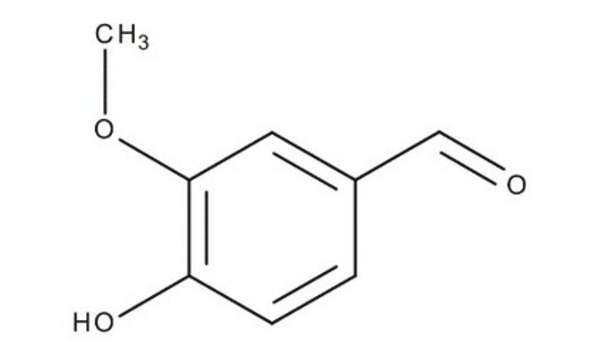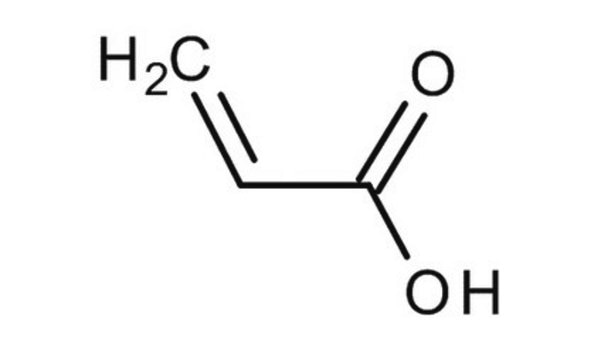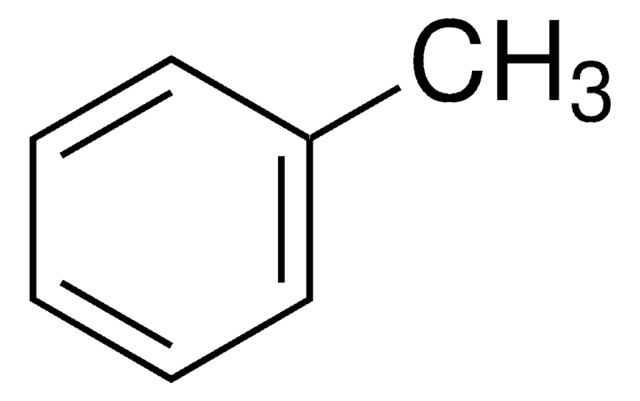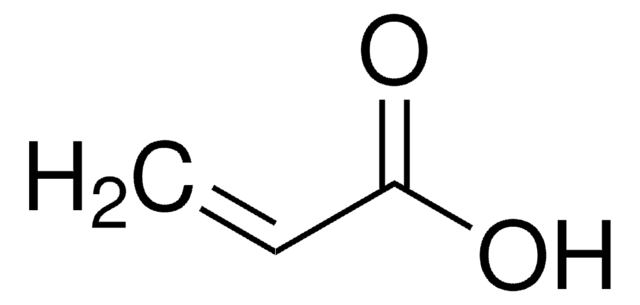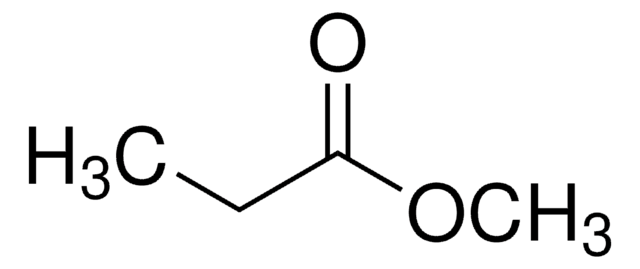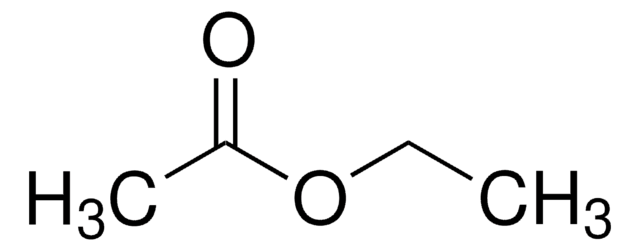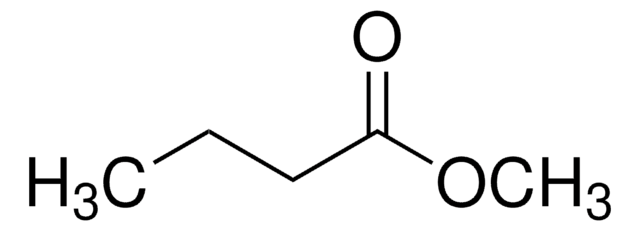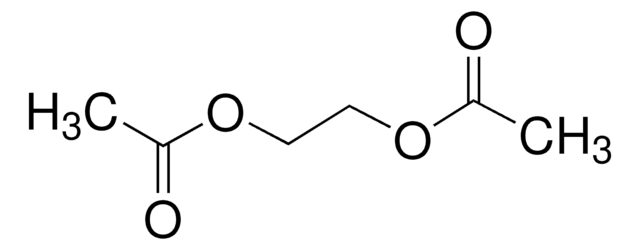8.09711
Methyl acetate
for synthesis
Synonym(s):
Methyl acetate
About This Item
Recommended Products
vapor pressure
217 hPa ( 20 °C)
Quality Level
assay
≥99% (GC)
form
liquid
autoignition temp.
455 °C
potency
>5000 mg/kg LD50, oral (Rat)
>2000 mg/kg LD50, skin (Rat)
expl. lim.
3.1-16 % (v/v)
pH
7
bp
56-58 °C/1013 hPa
mp
-98 °C
transition temp
flash point -13 °C
solubility
250 g/L
density
0.93 g/cm3 at 20 °C
storage temp.
no temp limit
InChI
1S/C3H6O2/c1-3(4)5-2/h1-2H3
InChI key
KXKVLQRXCPHEJC-UHFFFAOYSA-N
Application
- Adaptable heat pump-assisted dividing-wall column design for intensified downstream processing of bio-propionic acid: This article describes the esterification and separation processes in which methyl acetate is used to achieve higher purity levels in chemical production. This method enhances the recovery of methyl acetate at a purity of 99.9% (T Janković, AJJ Straathof, AA Kiss - Separation and Purification Technology, 2024 - Elsevier) (Source).
- Beta-irradiation of biomass in the presence of 1-alkyl-3-methyl-imidazolium ionic liquids: Discusses the unexpected product formation during the beta-irradiation of biomass, where methyl acetate plays a crucial role in the chemical reactions of biomass conversion processes (AF Lehrhofer, M Bacher, H Hettegger, S Böhmdorfer - Cellulose, 2024 - Springer) (Source).
- Supramolecular Gels Based on C3-Symmetric Amides: Explores the application of methyl acetate in the formation of supramolecular gels aimed at environmental applications such as anion-sensing and dye removal from water, demonstrating its versatility in advanced material science (G Kuppadakkath, SS Jayabhavan, KK Damodaran - Molecules, 2024 - mdpi.com) (Source).
Analysis Note
Density (d 20 °C/ 4 °C): 0.932 - 0.934
Identity (IR): passes test
signalword
Danger
hcodes
Hazard Classifications
Eye Irrit. 2 - Flam. Liq. 2 - STOT SE 3
target_organs
Central nervous system
supp_hazards
wgk_germany
WGK 1
flash_point_f
8.6 °F
flash_point_c
-13 °C
Certificates of Analysis (COA)
Search for Certificates of Analysis (COA) by entering the products Lot/Batch Number. Lot and Batch Numbers can be found on a product’s label following the words ‘Lot’ or ‘Batch’.
Already Own This Product?
Find documentation for the products that you have recently purchased in the Document Library.
Customers Also Viewed
Our team of scientists has experience in all areas of research including Life Science, Material Science, Chemical Synthesis, Chromatography, Analytical and many others.
Contact Technical Service